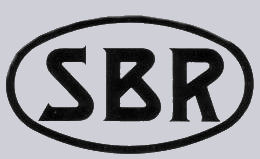|
|
|
|
 |
On October 4, 1922, was established
with an office and workshop at the Egmontstraat 4 in
Brussels. The company formed by the merger of two
existing radio companies: SIB (Société Indépendante Belge de
télégraphie sans fil) and SNR (Société Nationale
Radio-électrique ). One of the first products of the new
company was a modular system, inherited from the SIB.
The receiver consisted of multiple units that could be
connected by connecting strips and wires. Many
combinations were possible with this device and
therefore it was named Radio Puzzle. The Radio Puzzle
consisted of a receiver module with a loop antenna, a
detector module, a high-frequency module, and finally, a
low frequency module with a pair of headphones. An
additional module to operate a Morse writer was also
available . |
| In order to boost sale of radios, SBR
founded Radio-Bruxelles in 1923, shortly thereafter
renamed Radio Belgique. The station promoted itself as a
state broadcasting station but aired only in French. It
lasted until 1929 before the first Flemish broadcasts
were made by Radio Belgique, although before that year,
smaller stations did broadcast in Flemish. |
| In 1924, the new SBR plant located on
the Ruisbroeksesteenweg 66 was openend in Uccle. The
exhibition hall was on the Rue de Namur 30, Brussels.
The headquarters remained at the same address. The first
commercial radio named " Ondolina " stood at the
beginning of multiple versions that differed little
among themselves. The early version of the Ondolina had
external tubes. The receiver was powered by batteries
and the sound came from a separate speaker. The receiver
worked according to the "straight" principle. Virtually
all pre-war radios were called Ondolina. |
| Around 1927/28 came the "Super
Ondolinas". Those were radios that used the
superheterodyne principle. Around 1929/30 SBR marketed
several radios with different prices and shapes. The
cheapest units were called "Ondolinette", followed by
the Ondolina and the Super Ondolinas. Also during this
period the first AC powered radios and the first devices
with a built-in speaker, such as the 331 and 351 were
made. |
|
|